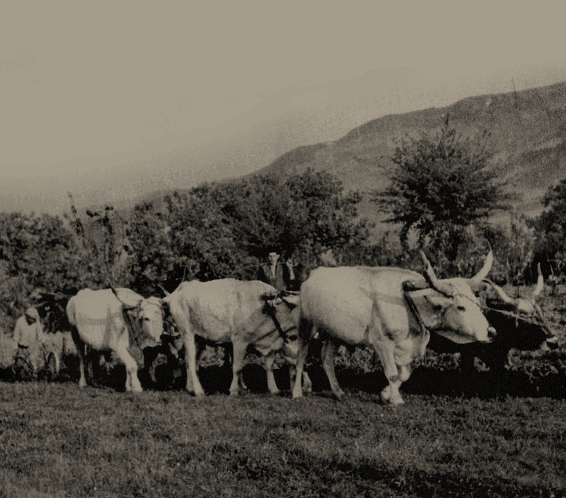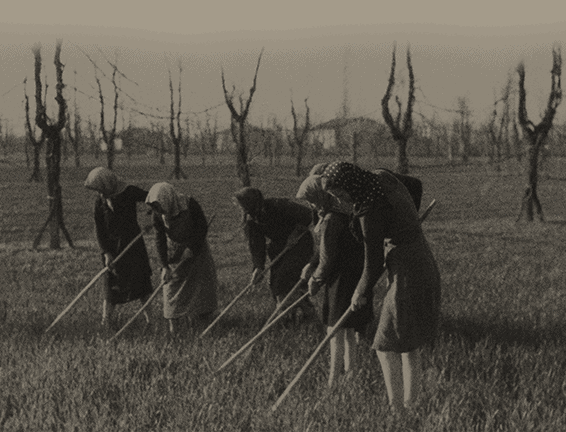Spring
This is the period when nature wakes up again from its winter slumber.
The countryside takes on colour and a new appearance; the trees are full of buds, and the branches become leafy and lush once more.
In many communities, particularly in Romagna, the new season is welcomed with rituals whose roots date back to centuries long ago: we are talking, for example, about the custom of lighting bonfires between the end of February and the very beginning of March. Lòm a merz, a tradition that is carried on even today, has a propitiatory function: people hope that these fires that they light – and which illuminate the landscape – may augur the arrival of a luxuriant spring, so that they finally free themselves from the rigors and darkness of winter.

Dòp un invéran ch’u s tnéva céus ad chèsa
U m pis da guardè un òm
Ch’e’ pàsa tra dal sìvi e di lanzùl
Ch’e’ réid a purtè a spas un animèli
After a winter that has kept us in our homes
I like to watch a man
As he walks amid the hedgerows and plots of land,
Laughing as he takes his animal for a walk.
Tonino Guerra, E’ Luneri (1954)
As Tonino Guerra writes, after a winter that has kept farmers shut up in their homes, life in the fields now begins to make more frequent demands on their time.
So, the fields become once again the center of rural life.
Between the end of February and the beginning of March, it is time to sow hemp. Once the soil has been duly prepared and tilled, the seeds of this plant can be sown; during the course of the year this crop will then undergo a number of other processes. Initially hemp was sown by hand, but from the second half of the nineteenth century onwards, this operation has been carried out by machines.
ollowing sowing, during the spring, the farmers take care of the soil in which the hemp is growing with a rake or roller in order to make the plants germinate and, subsequently, they proceed with hoeing to remove any weeds.

This is also the season when the dairyman begins the production of dairy products once more. Our collection contains many instruments, such as molds for cheese-making, butter churns, and cauldrons in which the milk turns to curd, which demonstrate the importance of these activities during the spring.
Also in spring, it is time to rack the wine and then bottle it. Beginning in the mid-1950s, the use of bottling machines became widespread. Care for the wine begins immediately after the harvest, but it then carries on throughout the year: in spring, after having matured in barrels and demijohns, the wine is ready to be bottled.


